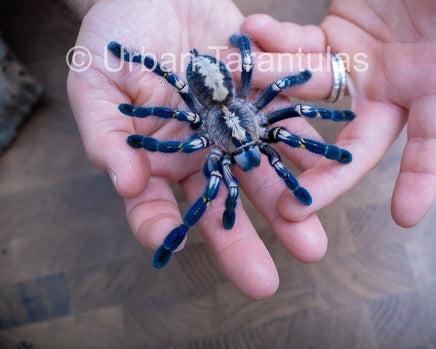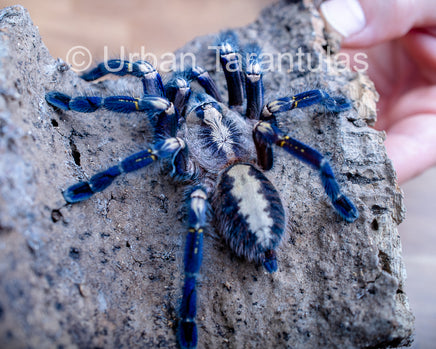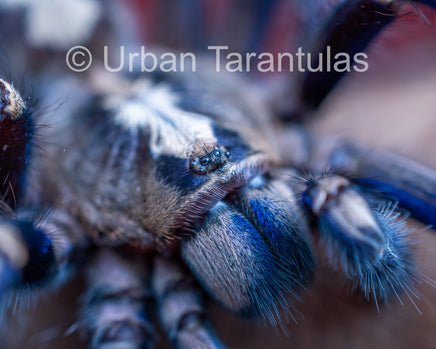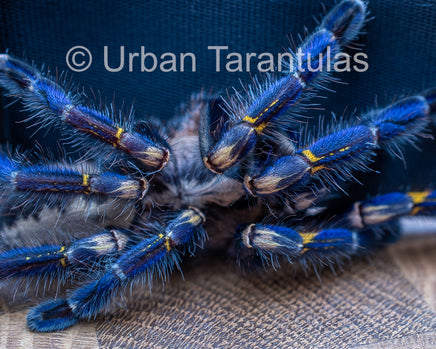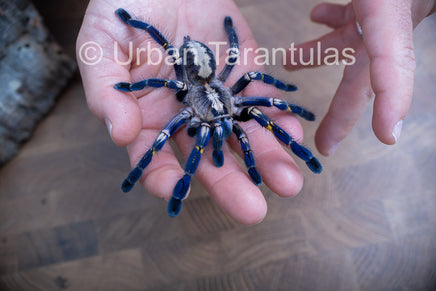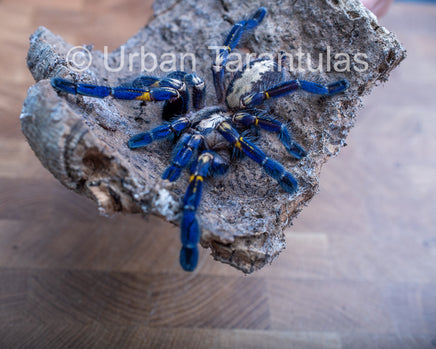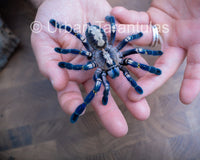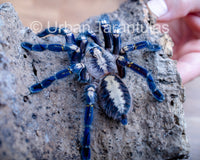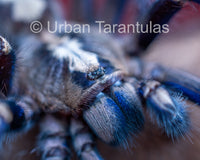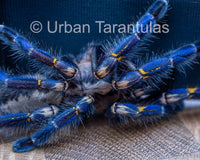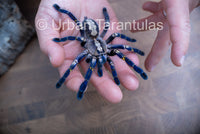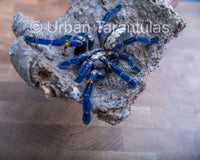Poecilotheria metallica - The Gooty Sapphire Ornamental Tarantula
Discover the mesmerizing beauty of the Poecilotheria metallica, commonly known as the Gooty Sapphire Ornamental Tarantula. This species is a true gem of the tarantula world, captivating enthusiasts with its striking blue coloration and intricate patterns. Native to a small area in India, the Gooty Sapphire is not only rare in the wild but also highly sought after by hobbyists. Let's delve into the essential care, fascinating facts, and unique characteristics that make this tarantula a must-have for any collector.
Care Details
- Temperature: The ideal temperature for Poecilotheria metallica ranges between 75 to 85°F (24 to 29°C). These conditions encourage healthy eating habits, growth, and regular molting, making maintenance straightforward for keepers.
- Humidity: A humidity level of about 70-80% is optimal for the Gooty Sapphire. While water dishes are not necessary for their well-being, they can be used without causing harm. Personally, I opt not to use water dishes for my tarantulas.
- Housing: Being an arboreal species, Poecilotheria metallica requires vertical space to thrive. For spiderlings, a small vial up to 5 inches tall and 2 inches in diameter with proper ventilation is adequate. Remember, these vials are available for free at checkout, but you must explicitly request one; otherwise, it will not be included. For juveniles and adults, enclosures should be 7-8 inches and 12 to 16 inches tall, respectively, providing plenty of space for climbing and webbing.
Diet
I provide my Poecilotheria metallica a diverse diet of crickets and cockroaches, including varieties like Dubia, Red-runner, and Madagascar hissing roaches. Young tarantulas do well with baby crickets and roaches. If limited to one prey type, that's also acceptable. Should the prey seem too large, merely crushing its head before placing it in the enclosure works well; the tarantula knows what to do next. It's crucial to remove any uneaten food to avoid mold. For an occasional treat, consider offering a pinky mouse, but remember, this should be infrequent to prevent dietary imbalances.
In-depth Facts
- Latin name: Poecilotheria metallica
- Common name: Gooty Sapphire Ornamental Tarantula
- Locale: This species is endemic to a small area in Andhra Pradesh, India.
- Category: Arboreal, minimal webber.
- Size: Females can reach sizes up to 7.5 inches, with males slightly smaller.
- Urticating hairs: They lack urticating hairs but compensate with their stunning appearance and agility as a defense mechanism.
- Growth rate: Poecilotheria metallica has a moderate to fast growth rate.
- Life span: Females can live up to 12 years or more, while males have a shorter lifespan.
- Recommended levels: lovers of the Indian and poecilotheria species.
Stay Connected
- Instagram: Follow my Instagram, I'm most active here.
- YouTube: For care and education videos, check out my YouTube channel.
- Facebook: Over here I have all my reviews.
- TikTok: Visit my TikTok for additional content.
Safety Disclaimer
Experiencing a tarantula bite is an extremely rare occurrence, and it's important to note that there have been no recorded fatalities due to a tarantula bite. The venom potency varies across species, with Old World tarantulas generally having stronger venom than their New World counterparts. Within the Old World category, the Poecilotheria genus is known for having particularly potent venom.
It's crucial to approach tarantulas with respect and understanding. If you happen to get bitten, which is unlikely, the key is to stay calm. In most cases, the discomfort is superficial and subsides within a few minutes to a few hours. However, bites from species with more potent venom may result in symptoms lasting up to a week. Remember, larger tarantulas tend to have more venom than smaller ones.
Please be aware that I cannot assume responsibility for bites. Tarantula handling should be done at your own risk. In my 11 years of experience with these creatures, I have only been bitten once, by a species with highly potent venom. While the experience was painful, the symptoms had completely disappeared after a week.
Handle tarantulas responsibly, and always prioritize your safety and the well-being of the tarantula.
